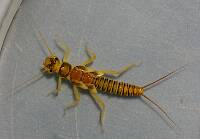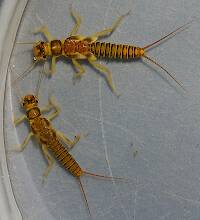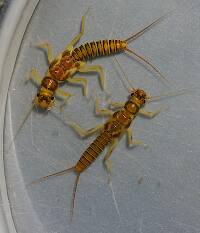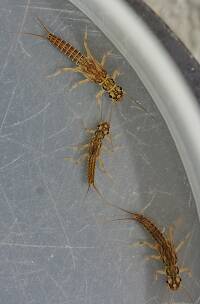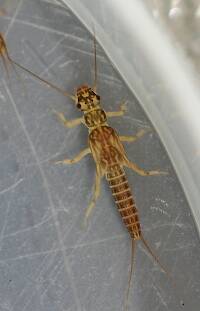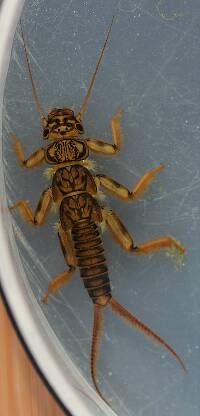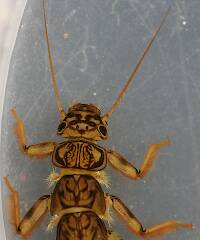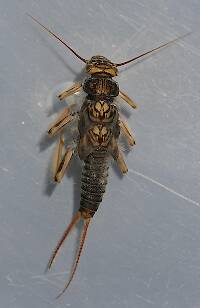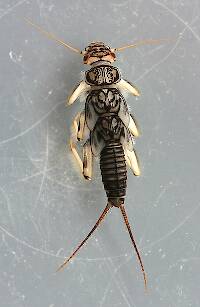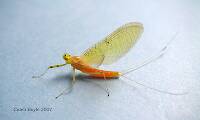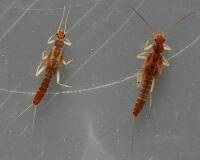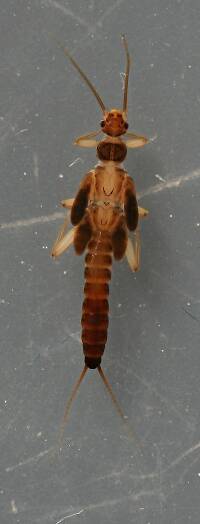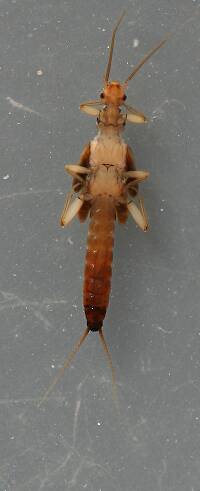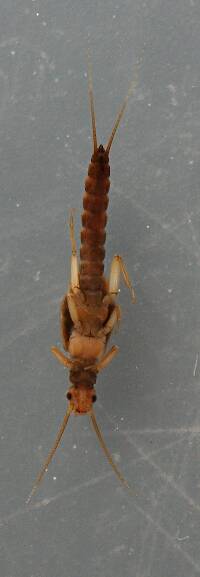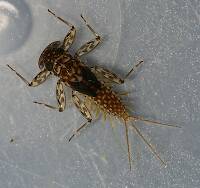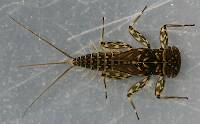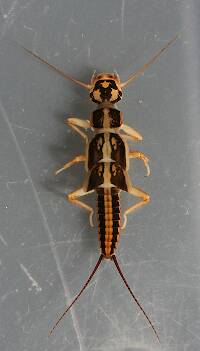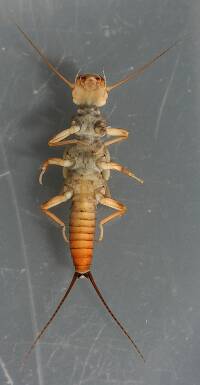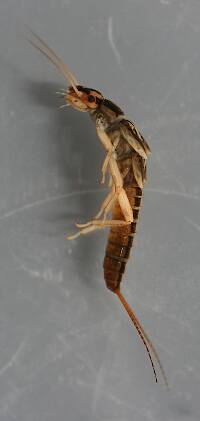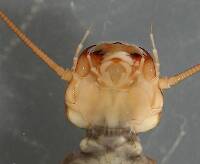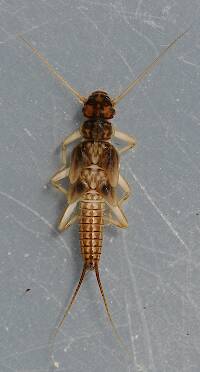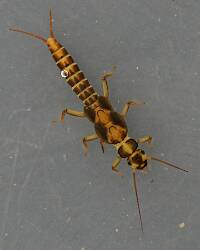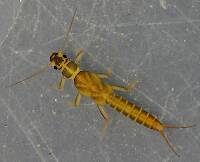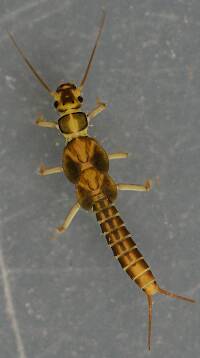
Hex Mayflies
Hexagenia limbata
The famous nocturnal Hex hatch of the Midwest (and a few other lucky locations) stirs to the surface mythically large brown trout that only touch streamers for the rest of the year.
Featured on the forum

This one seems to lead to Couplet 35 of the Key to Genera of Perlodidae Nymphs and the genus Isoperla, but I'm skeptical that's correct based on the general look. I need to get it under the microscope to review several choices in the key, and it'll probably end up a different Perlodidae.

Troutnut is a project started in 2003 by salmonid ecologist Jason "Troutnut" Neuswanger to help anglers and
fly tyers unabashedly embrace the entomological side of the sport. Learn more about Troutnut or
support the project for an enhanced experience here.
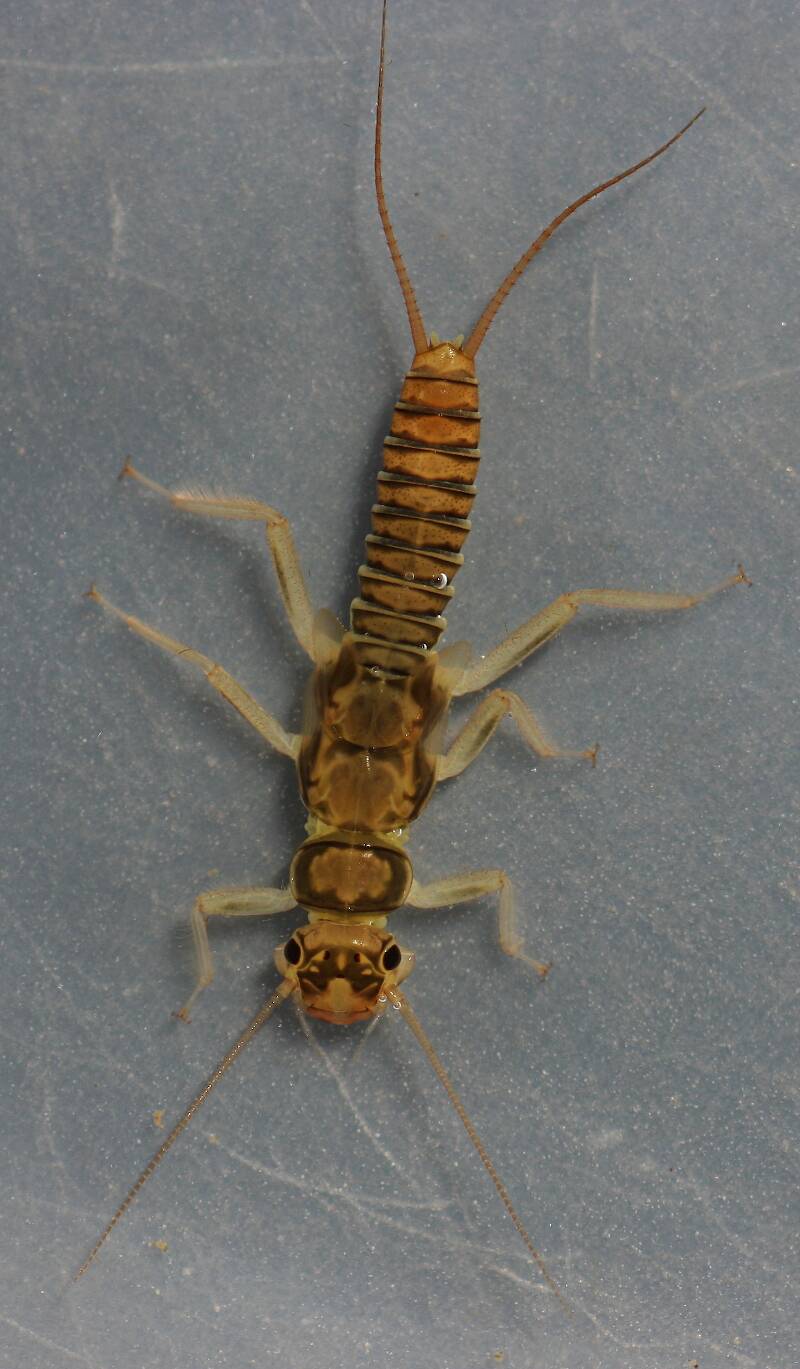
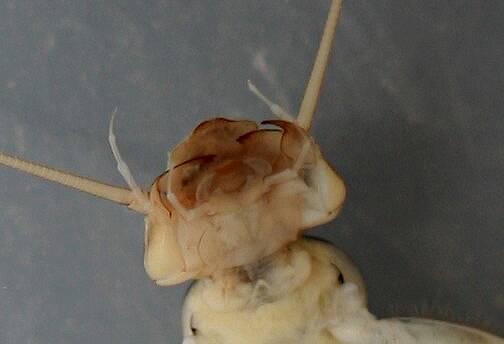
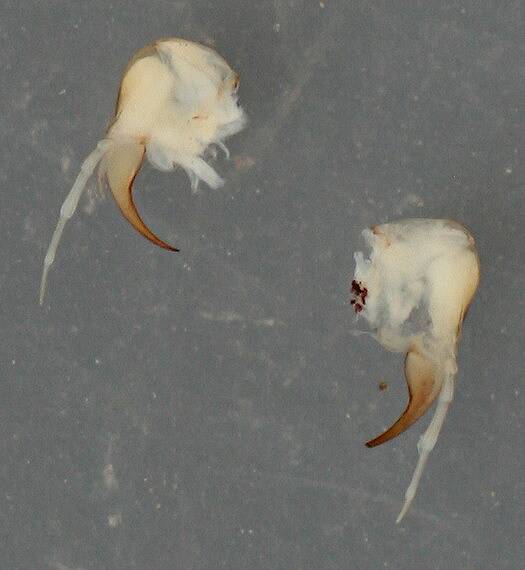
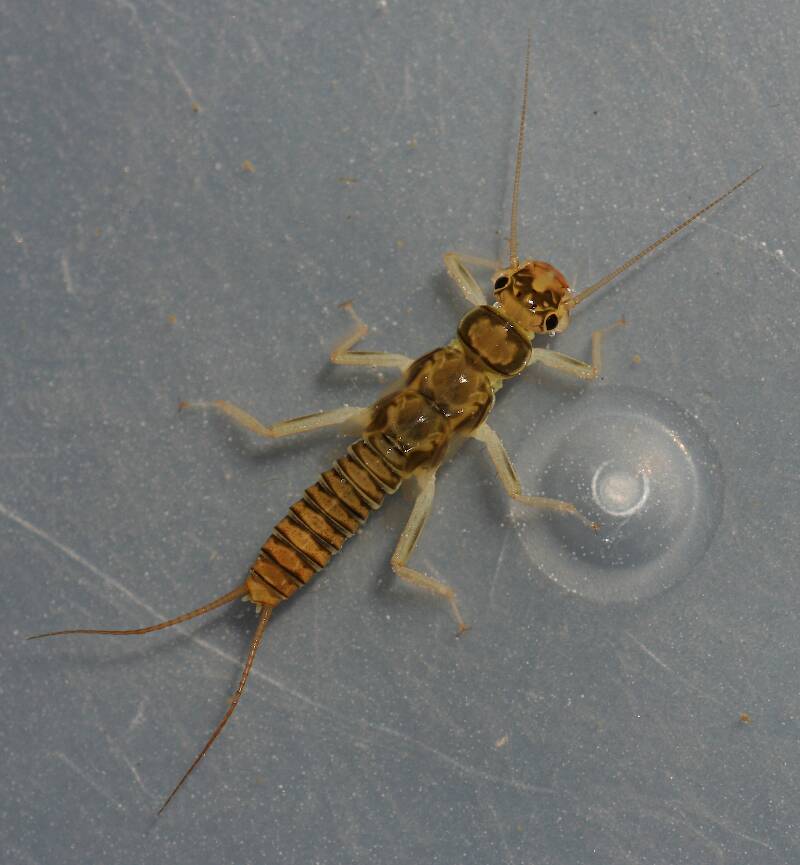
Millcreek on May 28, 2016May 28th, 2016, 6:03 pm EDT
I found this one in the Russian River on a substrate of gravel and cobble in a glide. It's rarely collected in this part of the river. I've found two of them so far. Collected on the 26th of April. Overall length is 15 mm excluding the cerci.
Originally had the genus and species at Rickera sorpta using Stewart and Stark's "Nymphs of North American Stonefly Genera (Plecoptera)"and Stewart and Stark's "Nymphs of North American Perlodinae Genera (Plecoptera; Perlodinae)". https://journals.lib.byu.edu/spc/index.php/wnan/article/viewFile/29199/27662
However when I submitted it to Bugguide I found out that it is referred to as Kogotus/Rickera. I'll let the following serve as an explanation.
Originally had the genus and species at Rickera sorpta using Stewart and Stark's "Nymphs of North American Stonefly Genera (Plecoptera)"and Stewart and Stark's "Nymphs of North American Perlodinae Genera (Plecoptera; Perlodinae)". https://journals.lib.byu.edu/spc/index.php/wnan/article/viewFile/29199/27662
However when I submitted it to Bugguide I found out that it is referred to as Kogotus/Rickera. I'll let the following serve as an explanation.
Kogotus vs. Rickera
For California aquatic bioassessment, we routinely leave perlodid nymphs with unidentate lacinia at the provisional (colloquially, "slash ID") taxon “Kogotus/Rickera”. The reason for this is that the single character given in the various keys (Stewart and Stark, 2002, for one) is the presence of a transverse suture connecting the anterior corners of the furcal pits for Rickera. This character is considered absent for Kogotus. However, this is not a straightforward character. According to my colleague and Plecoptera specialist, John Sandberg, this is actually a character of the adult showing through the larval exoskeleton. We’ve seen the cuticle fold in that exact location on Kogotus nymphs from Colorado, thus making them appear to be Rickera, even though we’ve had associated Kogotus modestus adults from those locations and Rickera does not range that far East.
Both Rickera sorpta and Kogotus nonus are known from CA, but we don’t know the complete distributions for each, only that they likely overlap. We have several nice populations of Rickera here in Butte and Plumas Counties which we’ve been studying for many years, so we have adults and associated final instar nymphs. Otherwise, the nymph pigment patterns are so similar between the two taxa, we can’t reliably separate specimens without having reared or carefully associated nymphs from the same location as live-caught adults.
For this specimen, I’d recommend leaving the ID at Diploperlini or using the “slash ID” of Kogotus/Rickera. I know this is not a satisfying determination, but to place this specimen to species would basically be a guess without associated adults. Speaking of which, I’d suggest watching for adults or attempting to rear out nymphs to make the species association. I can't recall whether you've been rearing aquatics, but if not, either John or I would be glad to give you some pointers on a very easy and efficient rearing method for stonefly nymphs.
… Brady Richards, 29 April, 2016 - 1:43pm
"If we knew what it was we were doing, it would not be called research, would it?"
-Albert Einstein
-Albert Einstein
Entoman on Jun 3, 2016June 3rd, 2016, 12:06 pm EDT
Hey Mark,
Excellent thread.. Love to hear about the method for raising Stonefly nymphs. I've never had much luck at it so it would be very helpful. I'm assuming it will also work for mayfly clinger nymphs where it would be beyond very helpful!
Excellent thread.. Love to hear about the method for raising Stonefly nymphs. I've never had much luck at it so it would be very helpful. I'm assuming it will also work for mayfly clinger nymphs where it would be beyond very helpful!
"It's not that I find fishing so important, it's just that I find all other endeavors of Man equally unimportant... And not nearly as much fun!" Robert Traver, Anatomy of a Fisherman
Millcreek on Jun 3, 2016June 3rd, 2016, 6:10 pm EDT
Kurt - Since I only found a couple of these nymphs, rearing them didn't seem practical, however here is a link to an article by these guys on stonefly rearing. http://www.safit.org/MemberDocs/Vol2No3_4.pdf
Article starts on page 4.
Article starts on page 4.
"If we knew what it was we were doing, it would not be called research, would it?"
-Albert Einstein
-Albert Einstein
Troutnut on Jul 29, 2019July 29th, 2019, 11:57 am EDT
I'm bumping this interesting thread because I'm trying to identify a "Kogotus/Rickeri" that turned up abundantly in my samples from a small stream in Washington.
Edit: Nevermind. I got an adult from the same date/site that keys to Kogotus nonus, so I'm assuming the nymphs are the same. It's still an interesting post, anyway.
Edit: Nevermind. I got an adult from the same date/site that keys to Kogotus nonus, so I'm assuming the nymphs are the same. It's still an interesting post, anyway.
Jason Neuswanger, Ph.D.
Troutnut and salmonid ecologist
Troutnut and salmonid ecologist
Quick Reply
Related Discussions
Topic
Replies
Last Reply
4
May 11, 2017
by Millcreek
by Millcreek
1
Jan 29, 2016
by Martinlf
by Martinlf
4
Sep 27, 2014
by Millcreek
by Millcreek




